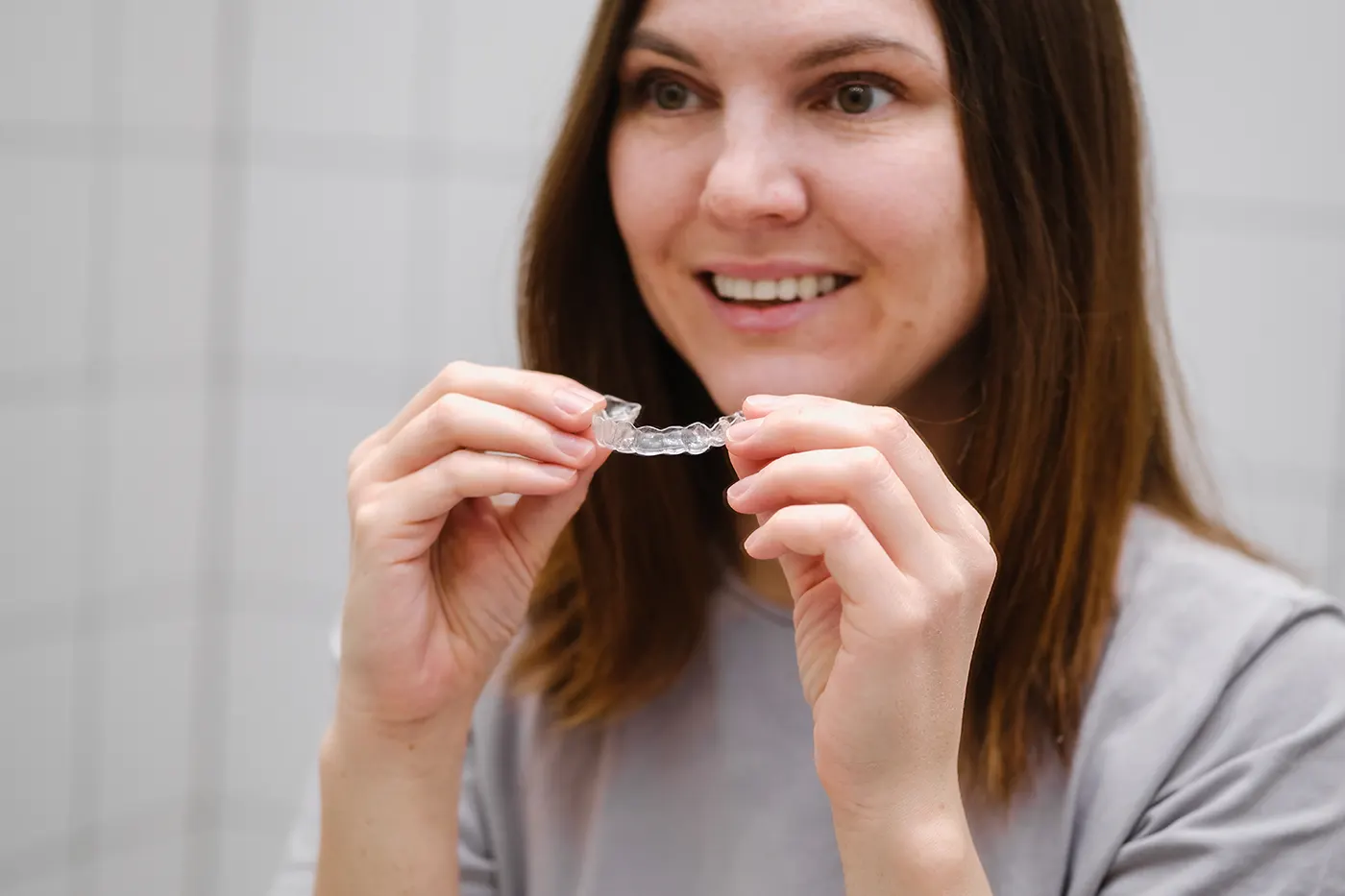
When to Call an Emergency Dentist: Recognizing Common Dental Emergencies
January 16, 2025
Preventative Dentistry: How Regular Dental Cleanings Can Save Your Teeth
March 18, 2025Choosing between Invisalign and traditional braces for straightening teeth can be a tough decision. Both options have their benefits, but more and more people are choosing Invisalign because of its discreet nature, comfort, and flexibility. If you’re weighing your options, let’s dive into why Invisalign might be the better choice for you.
What Is Invisalign?
Invisalign is a treatment that utilizes clear aligners to gradually move your teeth into the desired position. Unlike traditional metal braces that use brackets and wires, Invisalign aligners are virtually invisible and can be removed when you need to eat, drink (other than water), or brush your teeth.
The Comfort Factor: Invisalign vs Braces
One of the most significant benefits of Invisalign over traditional braces is comfort. Metal brackets and wires can irritate the inside of your mouth, especially in the first few days after your braces are tightened. You might experience painful sores on the inside of your cheeks, which can make eating and speaking uncomfortable.
With Invisalign, you don’t have to worry about metal poking or irritating your gums. The aligners are smooth and custom-made to fit your teeth, which minimizes discomfort. While you might feel some pressure when wearing the aligners (this means they’re doing their job), it’s typically far less uncomfortable than the tightness you feel with braces.
Treatment Time and Flexibility
Another advantage of Invisalign is the potential for shorter treatment times. Traditional braces can take anywhere between 18 months to 3 years to fully straighten your teeth, depending on the severity of the orthodontic problem. While Invisalign treatment can also vary, many patients see results in as little as 12 to 18 months. The treatment time for Invisalign can sometimes be shorter because the aligners are designed to be more precise and focus on tooth movements in a way that’s tailored to your needs.
Plus, Invisalign allows you more flexibility in your day-to-day life. With traditional braces, you need to avoid certain foods, such as popcorn, caramel, or hard candy, to protect your metal brackets and wires. You also can’t drink anything other than water while wearing braces, which can be a big inconvenience. With Invisalign, you can remove the aligners when you eat or drink, meaning you’re free to enjoy your favourite foods and beverages without restriction.
Oral Health: Easier to Brush and Floss
A big drawback of traditional braces is how hard it is to keep your teeth clean. The metal brackets and wires can make brushing and flossing hard, increasing the risk of plaque buildup, cavities, and gum disease. If you have braces, you’ll need to be extra diligent about your oral health, which includes brushing and flossing thoroughly around the brackets and wires.
In contrast, Invisalign aligners can be removed, making it easier to maintain your oral hygiene. You can simply take the aligners out, brush and floss your teeth as you normally would, and then put the aligners back in. This makes it much easier to keep your teeth clean and healthy throughout your treatment.
The Aesthetic Appeal: Invisalign’s Virtually Invisible Look
When it comes to aesthetics, there’s no comparison between Invisalign and traditional metal braces. Traditional braces, with their metal brackets and wires, can be very noticeable, especially for adults. They can be a source of self-consciousness, particularly for those who need to straighten their teeth later in life.
Invisalign aligners, on the other hand, are clear and virtually invisible. This allows you to straighten your teeth without feeling self-conscious about your appearance. Whether at work, school or out with friends, Invisalign allows you to go about your day without paying attention to your orthodontic treatment.

Types of Braces: How Do They Compare?
If you’re leaning toward traditional braces, you should know that there are a few different types to choose from. Traditional metal braces are the most common and can be very effective for treating even the most complex orthodontic issues. However, they’re also the most noticeable.
For a more discreet option, ceramic braces use clear or tooth-coloured brackets, making them less visible than traditional metal braces. However, ceramic braces still have metal wires.
Lingual braces are another option. These braces are placed on the back of your teeth, making them less visible. However, they can be more difficult to clean and are often more expensive than traditional metal or ceramic braces.
While these options may be more discreet than traditional braces, none of them are as invisible or convenient as Invisalign.
The Pros and Cons of Invisalign vs Braces
Like any treatment, Invisalign has its pros and cons. Let’s break it down:
Pros of Invisalign:
- Virtually invisible: The clear aligners are barely noticeable, so you don’t have to worry about how your braces look.
- Removable: You can take out the aligners to eat, drink, brush, and floss, making it easier to maintain good oral health.
- Comfortable: Invisalign aligners are smooth and custom-made to fit your teeth, which means fewer issues with irritation or discomfort.
Cons of Invisalign:
- Discipline required: You need to wear your aligners for 20-22 hours per day, so you must be disciplined about putting them back in after meals and snacks.
- Not ideal for severe cases: While Invisalign is great for mild to moderate orthodontic issues, more complex cases may still require traditional braces.
Pros of Braces:
- Effective for all cases: Traditional braces are highly effective at correcting severe orthodontic issues.
- No need for discipline: Since braces are fixed, you don’t have to worry about remembering to wear them.
Cons of Braces:
- Visibility: Metal braces are highly noticeable and can be a source of self-consciousness, especially for adults.
- Discomfort: Braces can cause mouth sores and discomfort, especially after adjustments.
- Food restrictions: You’ll need to avoid certain foods that can damage the braces.
Final Thoughts
In the battle of Invisalign vs braces, it’s clear that Invisalign offers numerous benefits when it comes to comfort, convenience, and aesthetics. While traditional braces can still be an excellent option for those with complex orthodontic issues, Invisalign provides a more discreet and flexible solution for many patients.
If you’re looking for a way to straighten your teeth without the hassle of metal brackets and wires, Invisalign treatment could be the best choice for you.
To find out if Invisalign is right for you, reach out to Axiom Dental and register as a new patient.
